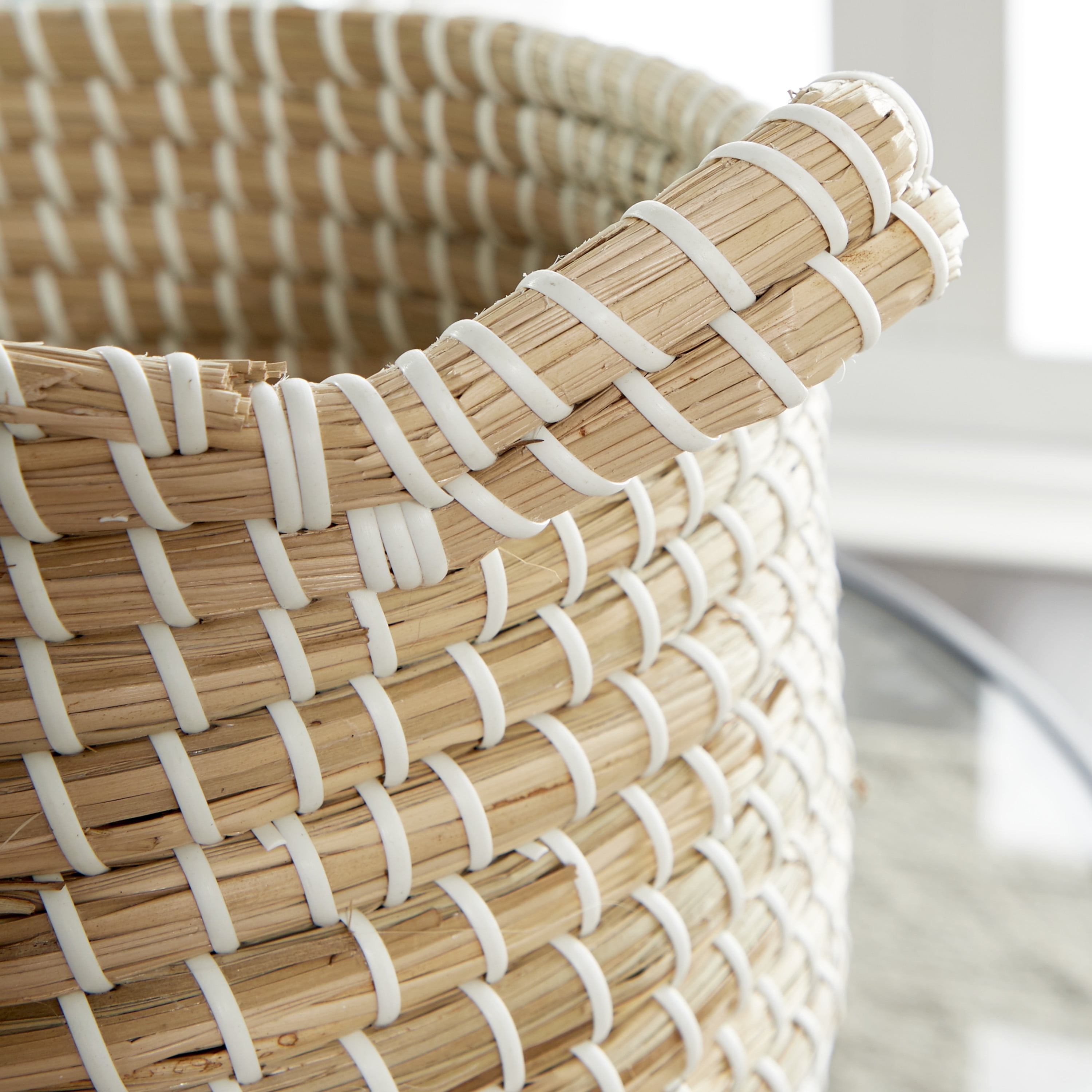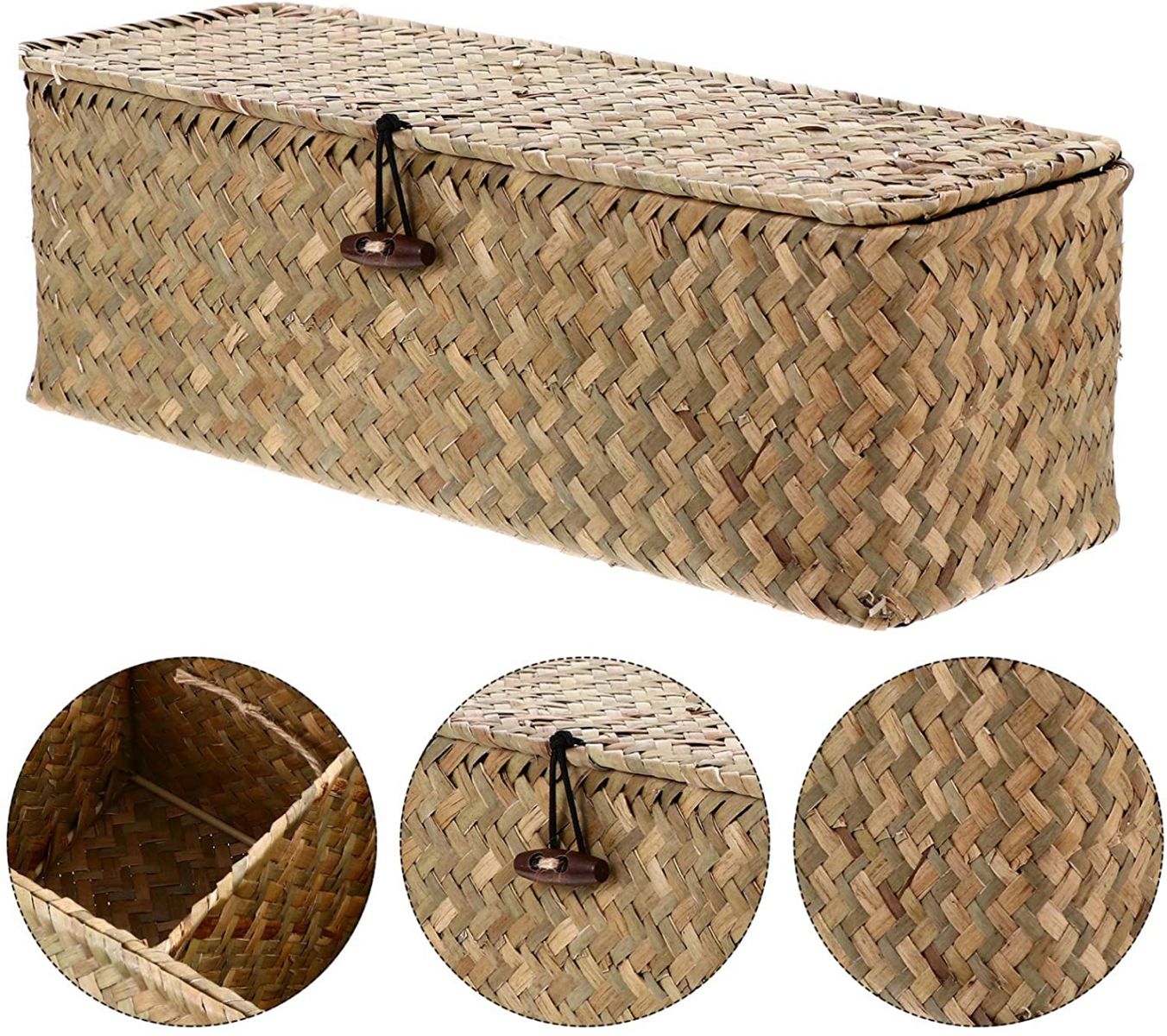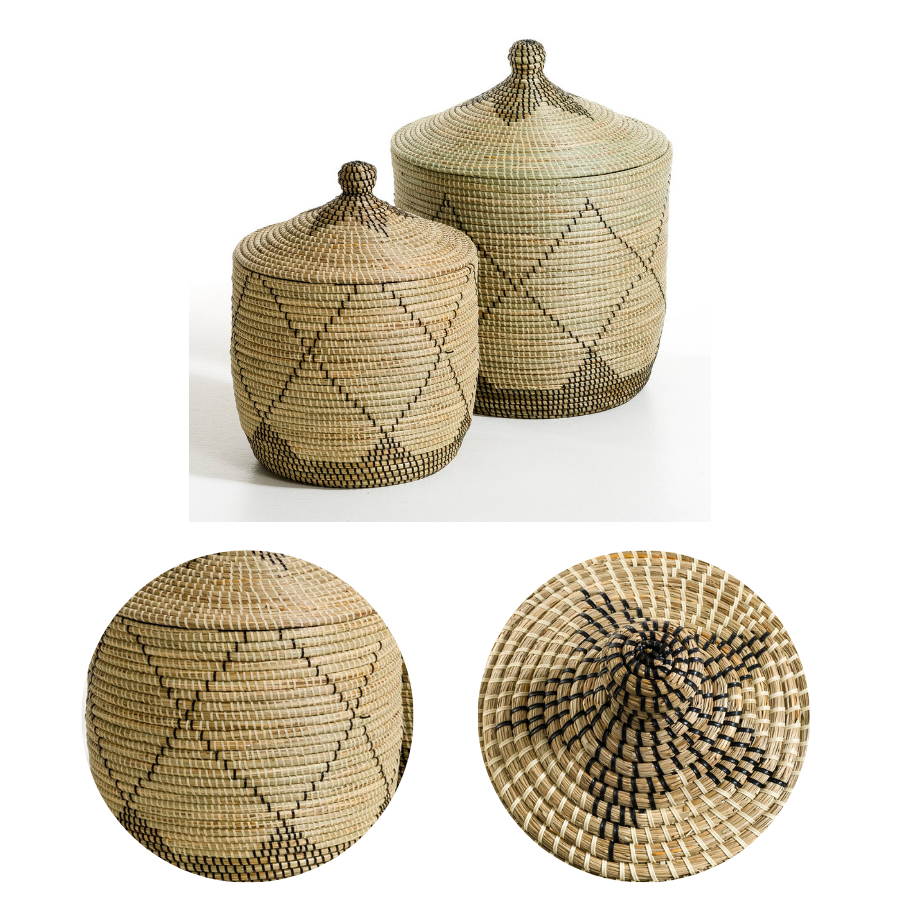Seagrass weaving is a time-honored craft that combines sustainability and artistry. In the handicraft wholesale market, seagrass has gained immense popularity due to its eco-friendly properties and versatility. Whether you’re looking to create storage solutions or decorative pieces, the different weaving styles provide a wide array of possibilities. Below, we explore six distinct styles of seagrass weaving, detailing their unique characteristics and common applications in the handicraft industry.
1. Split Seagrass Weaving
Split seagrass weaving is one of the most basic techniques, involving the splitting of seagrass into thin, un-twisted strands. This method creates a flexible, smooth texture that is ideal for light products. The result is a delicate, yet durable, material that lends itself well to smaller, decorative items.
Products made from split seagrass include small baskets, decorative bowls, and coasters. These products maintain a natural, minimalistic aesthetic, and their light flexibility makes them ideal for applications where softness and ease of handling are important.
The flexibility of split seagrass allows artisans to create more intricate designs with a smooth finish, making it an excellent choice for eco-conscious consumers seeking simple yet functional home decor.

2. Twisted Seagrass Weaving
Twisted seagrass weaving involves twisting several strands of seagrass together, creating a thicker and more durable material. This technique adds strength to the product, making it ideal for larger or more heavy-duty items. The twisting process enhances the texture and gives the final product a rustic and visually appealing look, making it perfect for both functional and decorative uses.
Common products made with twisted seagrass include large storage baskets, laundry hampers, and plant baskets. These items are designed to hold heavier loads, making twisted seagrass a great option for practical solutions that do not compromise on aesthetic value. The strength of this technique ensures the products can withstand everyday wear and tear, offering lasting durability.
The versatility of twisted seagrass makes it a favorite in the creation of both home storage solutions and decorative objects that need both strength and charm.

3. Braided Seagrass
Braided seagrass weaving is a more intricate technique that involves braiding seagrass strands together to form an interwoven, patterned design. This style not only adds beauty but also increases the strength of the product. The braided structure gives the final product an elegant, timeless look, making it suitable for a range of decorative and functional items.
Common products made with braided seagrass include rugs, mats, wall hangings, and decorative baskets. The braided texture offers a unique visual appeal while ensuring that the products are durable and robust. This technique is often used for creating high-end decorative items that are both practical and stylish.
Braided seagrass is perfect for adding texture and sophistication to home decor, and its timeless design ensures it remains a staple in eco-friendly interior design.
.jpg)
4. Wrapped Seagrass
Wrapped seagrass weaving is a technique in which strands of seagrass are tightly wrapped around a base material, often another strand of seagrass, to form a sleek, structured look. This method ensures that the products are both durable and elegant. Wrapped seagrass items often have a refined, polished appearance, making them ideal for creating sophisticated storage baskets, trays, and containers.
Products made with wrapped seagrass include storage baskets, decorative trays, and containers. These items are popular in both traditional and contemporary settings due to their clean, finished appearance. The wrapping technique allows for greater design flexibility, making it possible to create intricate, high-end products that retain their functionality.
Wrapped seagrass weaving provides the perfect combination of strength and beauty, making it a preferred choice for those seeking stylish, eco-friendly home decor.

5. Pressed Seagrass
Pressed seagrass weaving is a technique where the seagrass is flattened or pressed into a smooth, dense texture. This style is particularly well-suited for creating flat, structured products like mats, placemats, and coasters. The pressed seagrass technique offers a sleek, modern aesthetic while retaining the natural look of seagrass.
Common products made with pressed seagrass include mats, placemats, coasters, and flat baskets. The smooth, dense finish makes it perfect for more minimalist or contemporary designs. Pressed seagrass items are functional yet elegant, often used for creating clean, crisp surfaces in home decor.
This technique allows artisans to create sophisticated, modern products with a natural touch, making pressed seagrass an excellent choice for those looking to bring both style and sustainability into their homes.

6. Coiled Seagrass
Coiled seagrass weaving involves winding strands of seagrass around a central core to form a spiral or circular pattern. This technique is highly flexible and allows artisans to create rounded, structured products. The coiled pattern not only adds visual interest but also enhances the strength and durability of the final product.
Common products made with coiled seagrass include bowls, baskets, decorative trays, and storage containers. The coiled technique offers flexibility and strength, making it perfect for products that need to maintain their shape while also being capable of holding items.
Coiled seagrass weaving is an excellent choice for creating functional items that are both durable and aesthetically pleasing. The spiral design gives products a unique, natural charm, adding an organic touch to any space.

Why Choose Seagrass for Handicrafts?
Seagrass is a sustainable, eco-friendly material that is renewable and biodegradable. It’s a fantastic alternative to synthetic materials, offering both environmental benefits and lasting durability. Its natural look and feel lend themselves perfectly to creating home decor items that are not only beautiful but also functional.
As the demand for eco-conscious products grows, seagrass has become a top choice in the handicraft industry. Whether for baskets, furniture, or decorative accessories, seagrass products meet the needs of modern consumers who value sustainability, craftsmanship, and unique design.
The weaving techniques mentioned above—split, twisted, braided, wrapped, pressed, and coiled—provide endless possibilities for creating high-quality, handcrafted items. Each style has its own distinct characteristics, allowing artisans to experiment and create diverse product lines that cater to various market demands.
Conclusion
Seagrass weaving is a versatile craft that combines tradition with sustainability, making it ideal for the handicraft wholesale industry. By understanding the six popular weaving styles—split, twisted, braided, wrapped, pressed, and coiled—you can better appreciate the artistry involved in creating eco-friendly products that are both beautiful and functional. These techniques allow artisans to create a wide range of items, from small decorative accessories to large storage solutions, all made with natural materials that help protect the environment.
Incorporating these seagrass weaving styles into your product line or home decor collection can elevate your offerings while meeting the growing consumer demand for sustainable, handmade goods. Whether you’re an artisan or a buyer in the wholesale market, seagrass weaving offers something for everyone, combining artistry with functionality in every piece.




